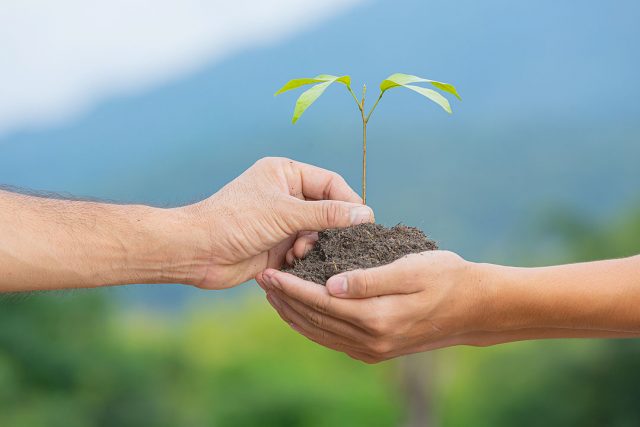When many parts of the country, including some of the biggest markets, went into lockdown in March 2020 to contain the coronavirus outbreak, farmers, even the ones outside the quarantine zone, had to dump their crops by the roadside for lack of a way to bring the produce to where the buyers were.
Later on, the community pantry movement sprang up, primarily as a means of providing free food to those in need, and incidentally offering itself as a potential solution to food waste.
The two incidents, some months apart, one gloomy and the other heartening, both paint a picture of food insecurity, a long-running problem that has stumped those who govern, and plagued those who regularly must do without.
According to a rapid nutrition assessment survey conducted by the Department of Science and Technology-Food and Research Nutrition Institute between Nov. 3 and Dec. 3 last year, more than half of all Filipino families had experienced moderate to severe food insecurity during the crisis.
Of the 5,717 households surveyed, just under 72% were forced to borrow money to obtain food, while 66.3% asked for food from their relatives, neighbors, and friends. The survey found that 56.3% of respondents reported having problems accessing food during the community quarantine period due to a lack of money (22.1%), limited public transportation (21.6%), loss of livelihood (19.5%), and limited food stores (10.8%). It added that 5.1% of the respondents were seniors who had no other family members to buy food for them.
The pandemic disruptions affected nearly every aspect of the agro-food system, particularly the farming and fisheries industries, which employ about 30% of the workforce. Now the question is whether the disruptions may have made it more difficult for countries like the Philippines to achieve their development goals.
The fear is that the interplay of the coronavirus and other external shocks, as well as overarching issues such as climate change and population growth, may have clouded the outlook for one of the fundamental functions of an economy, which is to provide food in order for people to sustain themselves.
“A resilient food system should ensure that the supply is accessed equitably at reasonable prices, while (ensuring) fair income and livelihoods for our farmers and producers,” she said.

DIGITAL SOLUTIONS AND BIG DATA
Ms. Torres said the digitization of the value chains “can be considered one of the long-term measures” to make the food system more resilient and adaptive to the changing environment.
Bringing supply to where the demand is has become challenging during the pandemic, Ms. Torres said, noting that digital solutions have mitigated the disruption somewhat, enabling producers and consumers to interact more directly, thereby keeping markets functioning.
Online platforms that connect producers to buyers sprouted during the crisis when the ability to conduct face-to-face transactions was compromised. In March 2020, social enterprise Agrea launched an online ordering service linking consumers in the capital region with farmers.
“Our COVID-19 experience has seen a digital shift in our economic transactions,” Ms. Torres said. “Similarly, we can start rethinking our supply chain through this lens.”
“One thing we have to note is that the food chain consists of different nodes where multiple actors play a role,” she added.
Ms. Torres said emerging technologies can address bottlenecks in productivity and post-harvest handling, improve market access and management during lockdowns, ensure food security, and strengthen climate resilience. Big data will play a major role in making the value chain more efficient and responsive, she said. When so enabled, farmers will be empowered to make risk-based decisions based on the best information available about growing methods, inputs, and markets.
The killer apps for big data in agriculture are tools for achieving unprecedented precision in where and when to farm or what to plant; and greater accuracy in prediction, facilitated by satellite imaging to give farmers the ability to make climate-sensitive decisions. Big data can tease out rainfall patterns and water cycles, making for actionable forecasts.
Drones can also be used to monitor the health of crops and the land even during rainy days. Real-time data from these tools can also lead to more informed decisions about the effective use of fertilizers, in the process improving yields while reducing their environmental impact.
The United Nations Food and Agriculture Organization (FAO) estimates that the application of fertilizer in the Philippines grew 1,000% between 1961 and 2005, which means the practice is now fairly widespread, making the main problem how fertilizer can be used to greatest effect.
Another key input, pesticide, is also likely to be put to better use with the help of big data, which can help determine “what pesticides to apply, when, and how much,” according to Talend, a French software company.
“Big data can truly revolutionize the agricultural sector only by having a cloud-based ecosystem with the right tools and software to integrate various data sources,” Talend said. “These tools should be able to consolidate data on climate, agronomy, water, farm equipment, supply chain, weeds, nutrients, and so much more to aid the farmer make decisions.”
Ms. Torres said big data can address supply chain problems by “improving the coordination systems for food logistics.” These tools can also be used by farmers to study the impact of border closures and other logistics challenges, she added.
Innovation in finance also means farmers can gain greater access to credit, while social protection mechanisms can reach them more readily, Ms. Torres said.
The digitization of the credit evaluation process now features the employment of algorithms to map crop sustainability, enabling lenders to anticipate the issues faced by small-scale farmers and “understand how risky a farmer’s production is,” Roy Parizat and Heinz-Wilhelm Strubenhoff of the World Bank said in an article published by the Brookings Institution.
The process of onboarding farmers for financial services can be streamlined into a mobile phone-based application to reduce transaction costs, they said.
“The capacity of the state’s ICT (information and communications technology) should beready to adapt to shifts in the food system,” Ms. Torres said.
The digitization of agriculture and its supporting ecosystems will require, among others, strong partnerships involving governments, businesses, and farmers, as well as a regulatory environment to ensure that technology remains affordable and accessible, Gilbert Fossound Houngbo of the International Fund for Agricultural Development said in a commentary published by the World Economic Forum.
“The private sector should be encouraged to advance, adopt, and re-engineer technologies for, and in collaboration with, small-scale farmers,” he said. “Investing in digital agriculture today offers the promise of a quadruple return.”
“Even before the pandemic, the economic opportunities that digital markets offer have been enormous,” said Arsenio M. Balisacan, chairman of the Philippine Competition Commission (PCC) and the government’s former chief economic planner.
Due to the considerable market power of some digital platforms, “monopolization and abuses of dominance are high risks, as demonstrated by some recent cases in the US, EU, and even the Philippines,” he said.
With the acceleration of the digital shift, it has become even more crucial for the PCC to be “vigilant in monitoring developments in digital markets and boost its technical capacity to safeguard competition in these markets,” Mr. Balisacan said.
Doing so will protect consumers and small businesses who depend more on these technologies and maximize the growth potential of the digital economy, he added.
“As we know it, ensuring competitive processes will build a robust foundation for sustained and inclusive growth, which is necessary for the strong recovery of our economy.”
ADDRESSING POST-HARVEST LOSSES
In properly-functioning food markets, where information flows freely and where there are no barriers to entry and to the movement of goods and services, goods will naturally flow from areas with surpluses to areas experiencing shortages, Mr. Balisacan said.
But the Philippines is still far from achieving that. Chief among the problems inherent in getting from point A to point B is ensuring that enough of the crop survives in order to be sold.
Postharvest losses of major farm commodities in the Philippines range between 10 and 50%, according to the Philippine Center for Postharvest Development and Mechanization.
“In the Philippines, postharvest losses of commodities represent a very significant loss…” it said. “This means that 10 to 50% of all the land, inputs, and labor used to produce the commodities go to waste. And it also means that all of us… have a lot of work to do.”
The global average for postharvest losses is around 14%, according to the FAO. In all production stages, about one-third of the world’s food is wasted, it said.
To address such waste, sensors can be deployed to measure properties of fruit to determine their readiness for delivery to various destinations, according to a study by Jean Frederic Isingizwe Nturambirwe and Umezuruike Linus Opara, postharvest technology experts at South Africa’s Stellenbosch University.
The data generated by the sensor data can then be reflected in packaging materials to provide indications of their state of freshness. These sensors can also send data to a command center that can be accessed by both producers and consumers.
Investment in cold-chain facilities and equipment that processes produce on-site or as near to the production areas as possible can also cut food waste and ensure that there is sufficient food dispatchable to areas experiencing food insecurity, Ms. Torres said.
“It is important to boost postharvest support while there are bottlenecks in the supply chain and there are extreme disruptions in the mobilization of supply,” she said.
Such investments will increase the likelihood that surpluses can be moved to areas suffering from shortages and to “prepare (for) seasons of the year when supplies are low,” according to Michael L. Ricafort, chief economist at Rizal Commercial Banking Corp.
“Processing facilities would enable much longer shelf life for manufactured agricultural products that could also be sold locally as well as in export markets,” he said.
The private sector and government should also collaborate in putting up common warehouses accessible to rural farms and linked to digital ledgers, giving farmers access to multiple markets while reducing marketing costs.
OVERCOMING THE DIGITAL DIVIDE
Emerging technology and digital infrastructure designed to streamline the supply chain may have unintended consequences and negative trade-offs, said Terry L. Ridon, convenor of infrastructure think tank InfraWatchPH.
Many Filipinos still cannot access internet service of sufficient quality, and may not even know how to use it. The digital divide can create information asymmetries that could do more harm than good. Meanwhile, weak data management can lead to the misuse of farmers’ business and personal information.
Mr. Ridon said the government needs to accelerate public access to digital and physical infrastructure to avoid such information asymmetries, which could further disenfranchise the already marginalized members of the agro-food system.
“Governments need to define what truly matters in reforming the agriculture sector,” he said, noting a need to determine “which technologies are most appropriate to implement in this sector.”
“It is our view that what matters the most is ensuring the best and fairest prices to both consumers and producers,” he added.









